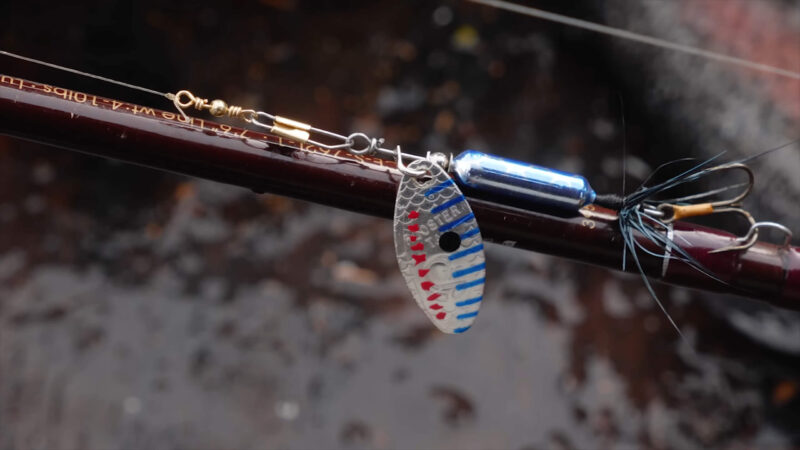The Rooster Tail, designed by Yakima Bait, combines visual and physical cues that fish find irresistible. It’s the blade that spins and creates vibrations in the water, mimicking the movement of small baitfish.
Additionally, the feathered tail adds a natural, flowing motion. These two elements attract predatory fish, triggering aggressive strikes. You don’t need to be a seasoned angler to appreciate the Rooster Tail’s simplicity, which allows you to focus more on your fishing location and the conditions rather than technicalities.
Key Takeaways
- Match the size and color of your Rooster Tail to the species and water conditions for better results.
- Adjust your retrieval technique based on the water’s movement and depth to keep the lure effective.
- Avoid common mistakes like retrieving too quickly and prevent line twist with a swivel for better lure performance.
Select the Right Rooster Tail
One of the first decisions to make is choosing the correct Rooster Tail size. Different species of fish will respond better to various sizes, and the water conditions also play a part in this decision.
For Trout and Crappie
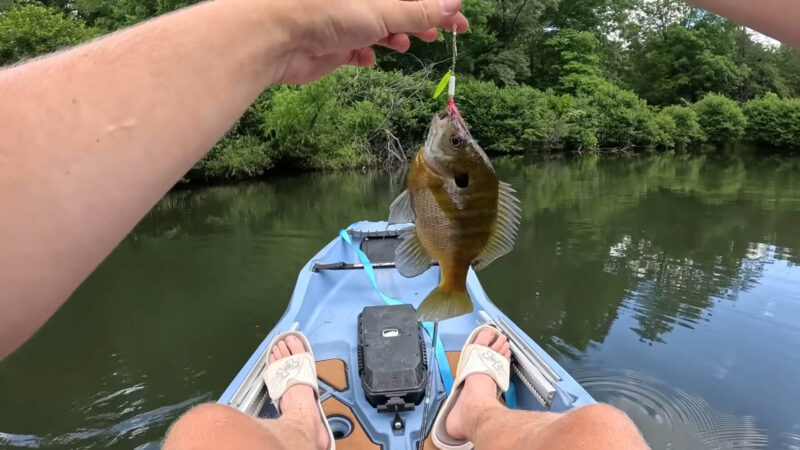
Smaller Rooster Tails between 1/16 oz and 1/8 oz work best. Trout and crappie tend to shy away from larger lures, so a smaller profile is less intimidating. Colors like silver and rainbow are commonly recommended for clearer waters, while chartreuse can be effective in murky conditions.
An interesting fact you can read about is the difference between black and white crappie, which we wrote about earlier
For Bass and Pike
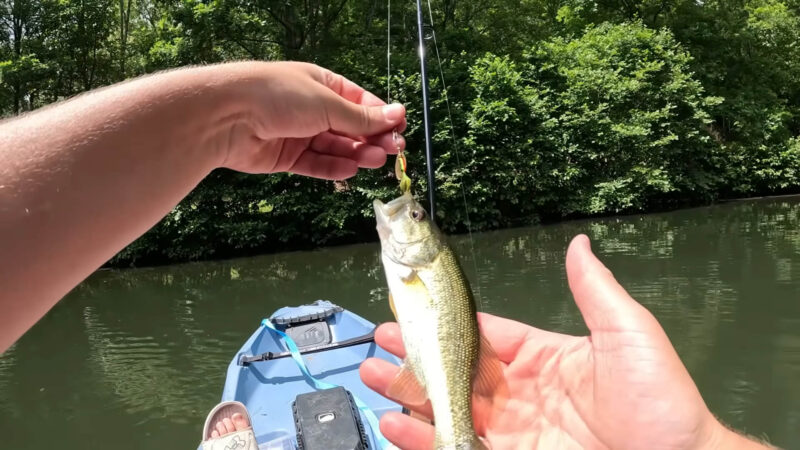
If you’re going after bigger fish like bass or pike, use Rooster Tails in the 1/4 oz size range. Larger lures are easier to cast and can handle stronger fish. White and chartreuse are excellent colors for stained water, while black or blue works better in clear conditions.
Rig Your Rooster Tail
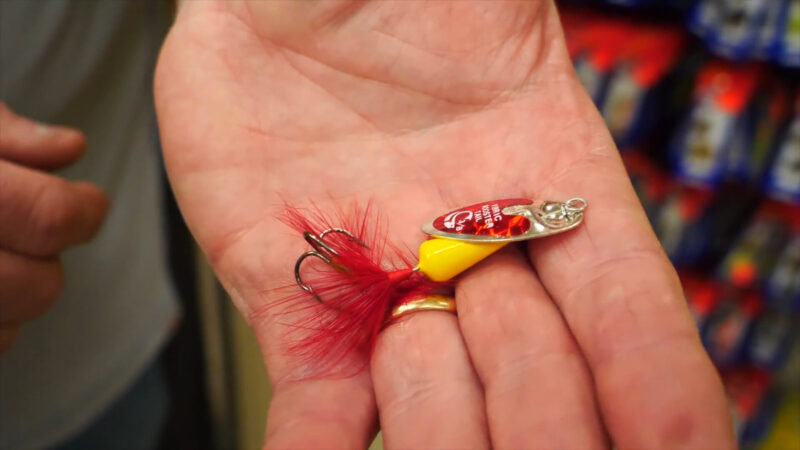
Rigging your Rooster Tail properly can make or break your fishing day. You don’t need much gear, but there are a few steps to keep in mind.
1. Choose Your Line
For most applications, a braided line with a fluorocarbon leader works well. Braid offers sensitivity and strength, allowing you to feel even the slightest nibble. A fluorocarbon leader helps with stealth, as it’s nearly invisible underwater.
For trout and crappie, you can use a 6 lb fluorocarbon leader with a 10 lb braided mainline. For bass or pike, you might go up to a 12 lb fluorocarbon leader with 20 lb braid.
2. Tie the Uni Knot
The Uni Knot is simple to tie and strong enough to handle the pressure from larger fish. Thread the line through the eye of the lure and double it back to form a loop. Wrap the tag end around the doubled line and through the loop five to six times.
Pull it tight and trim the excess line. The knot is essential because it ensures your Rooster Tail stays securely attached.
3. Add a Swivel (Optional)
Some anglers like to use a small barrel swivel between the Rooster Tail and the mainline. This reduces line twist, especially when using lighter lures. However, if you’re casting a heavier Rooster Tail or using a braided line, you might not find this necessary.
How to Fish a Rooster Tail
The Rooster Tail is one of the easiest lures to fish, but you can still refine your technique for better results. The key is understanding how fish behave in different water conditions and adjusting your retrieval accordingly.
Calm Water
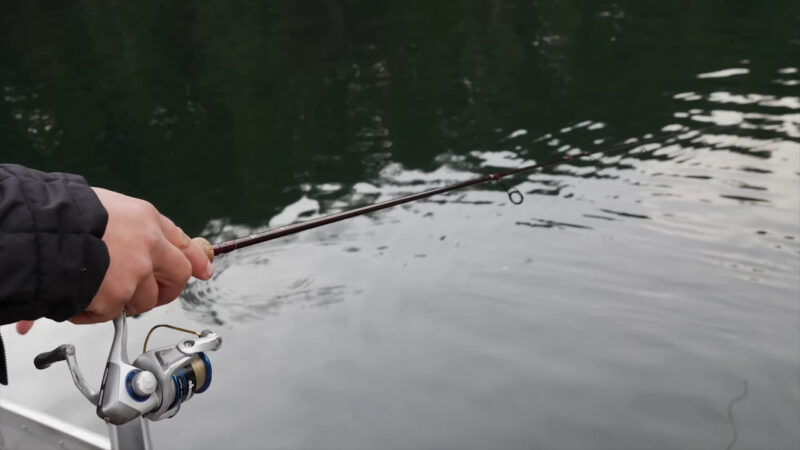
In calm water like ponds and lakes, a slow and steady retrieve is often the best approach. Cast your Rooster Tail near structures, such as submerged logs or rocks, where fish tend to congregate.
Keep your rod tip low, and reel in at a consistent speed to keep the lure at the desired depth. A slow retrieve allows the blade to spin continuously, creating the flash and vibration that draw in fish.
Moving Water
When fishing in rivers or streams, the water current can work to your advantage. Position yourself slightly downstream from where you expect fish to be holding, and cast upstream.
Let the Rooster Tail drift naturally with the current while retrieving it slowly. The moving water will spin the blade for you, making this a low-effort yet effective technique.
Jigging
If you’re fishing in deeper water or targeting fish that are holding close to the bottom, jigging can be an effective method. Cast your Rooster Tail, let it sink to the desired depth, and then lift and drop your rod to create a vertical movement.
This imitates a baitfish swimming up and down, which can be irresistible to predatory fish, especially in lakes or deeper rivers.
Trolling
Trolling is another method that works particularly well in larger bodies of water. Let your Rooster Tail trail behind your boat at varying distances (20-50 feet, depending on the depth you want to target), and adjust the trolling speed based on the water temperature.
In colder waters, slow down your trolling speed to give fish more time to strike.
Adjust to Water Conditions
Water clarity, temperature, and current speed all impact how you should fish a Rooster Tail. In clear water, fish are more visual hunters, so using bright colors and faster retrieves will get their attention.
In murkier water, fish rely more on vibration to find prey, so slower retrieves with more erratic movements, like the stop-and-go technique, can be more effective.
- Clear Water: Use lighter colors like silver or white. A faster retrieve that keeps the lure near the surface will often attract the most attention.
- Murky Water: Opt for darker colors and slower retrieves. Vibrating the lure by twitching the rod tip can help fish locate it.
- Cold Water: Fish tend to be less aggressive in colder conditions, so slower retrieves will often yield better results. Let the Rooster Tail sink deeper and retrieve slowly, keeping the lure just off the bottom.
Different Times of the Year
Fish behavior, water temperature, and the availability of natural prey all vary throughout the year.
Spring Fishing
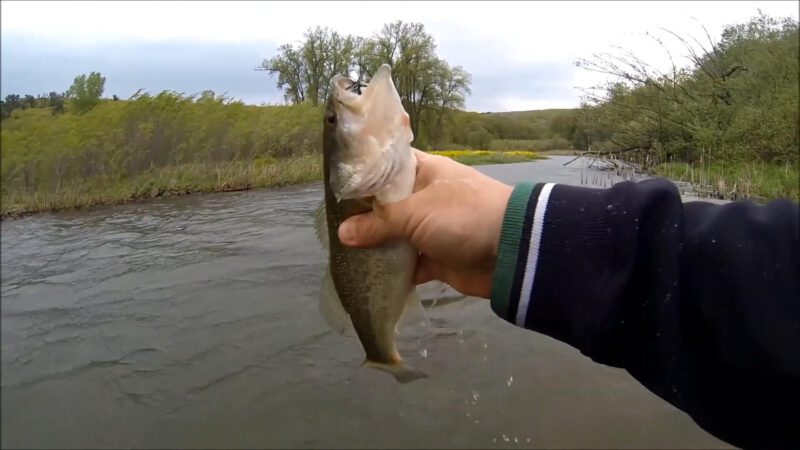
In the spring, fish are generally more active as the water begins to warm, and they emerge from their winter lethargy. During this time, predatory fish like bass and trout are more likely to strike aggressively.
The key in the spring is to use smaller Rooster Tails in natural colors such as silver or white, which mimic small baitfish or insects that are commonly present during the spring thaw.
Spring is also a prime time to fish around spawning areas. Fish will be in shallower waters near vegetation or rocky bottoms, making it easier to locate them.
Summer brings warmer water temperatures, which can make fish less active during the heat of the day. Fish tend to move to deeper water where it is cooler. During the early morning and late evening, however, fish become more active near the surface. This is a great time to use Rooster Tails in brighter colors like chartreuse or fire tiger, as they stand out well in the low light conditions common in these parts of the day. In lakes and ponds, targeting shaded areas or deeper pockets of water will yield better results, especially for species like bass and pike. In rivers, fish tend to gather near cooler spots such as deeper pools or shaded areas near the banks. Fall is often considered one of the best times for fishing, as fish begin to feed aggressively in preparation for the winter months. During this season, larger Rooster Tails in bright, flashy colors tend to perform well. Fish are more likely to strike at larger prey to build up their energy reserves, making fall the perfect time to use larger sizes of Rooster Tails. Fish tend to move back into shallower waters in the fall, especially as water temperatures begin to cool down. Targeting areas with a lot of structure, like submerged logs and rocks, can lead to successful catches. Even experienced anglers make mistakes with Rooster Tails. Avoid these common errors to improve your chances of success. Many new anglers retrieve their lure too fast, thinking they’ll cover more water. But if you reel in too quickly, the Rooster Tail might not stay at the right depth, and the blade may not spin effectively. Fish prefer a slower, more natural movement, so take your time with each cast. Especially with smaller Rooster Tails, line twist can become a major issue if you’re not careful. This is where a barrel swivel can come in handy. It prevents the line from twisting, which not only makes casting easier but also extends the life of your line. Always match the size of your Rooster Tail to the fish species and water conditions. If you use a lure that’s too large for the fish you’re targeting, they may not strike. Conversely, using a lure that’s too small might not give you enough weight to cast properly. Fishing with a Rooster Tail is an art form that can be fine-tuned with practice. By understanding the various techniques, modifying your setup, and adjusting to seasonal changes, you can turn a basic lure into a powerful tool for catching a wide variety of fish. Whether you’re fishing in calm lakes or fast-moving streams, the Rooster Tail’s versatility and ease of use make it a must-have in every angler’s tackle box.Summer Fishing
Fall Fishing

Common Mistakes and How to Avoid Them
Retrieving Too Quickly
Ignoring Line Twist
Using the Wrong Size Lure
Last Words

